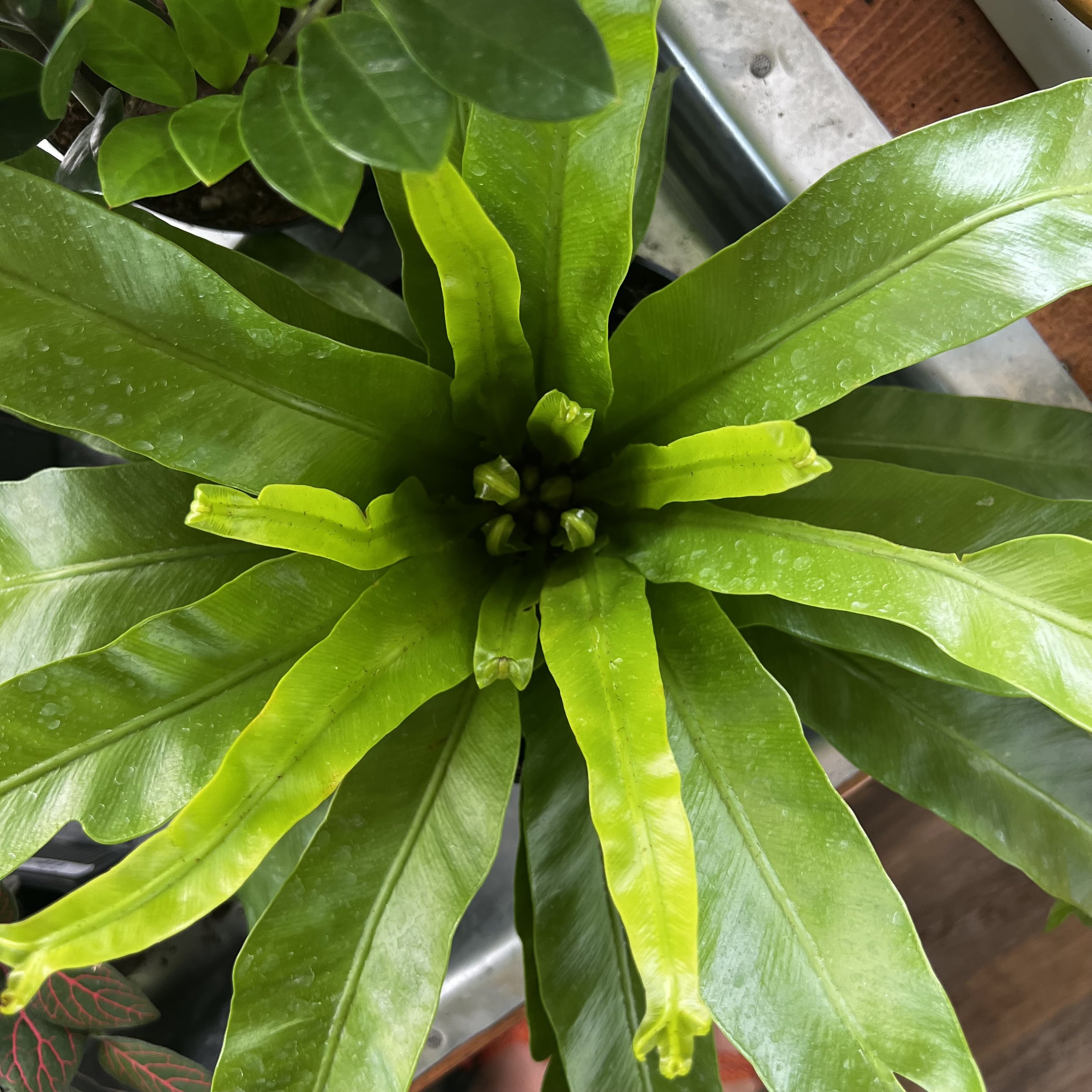FERNS
Order Polypodiophyta

FERNS
Division Polypodiophyta
-
Light: Ferns are understory plants that prefer low to medium light levels depending on species. Try to find an east or north room for your fern to thrive in.
Temperature: 55-75 F
Humidity: medium to high; avoid drafty areas
-
Water: Ferns need consistently moist but not soggy potting mix. Water when the top inch of potting mix dries.
When watering, avoid watering overhead. Wetting the leaves repeatedly can cause browning and eventual plant decay. Instead, try watering from the bottom by placing your fern in a tray of water. The potting mix will soak the water up via the container drainage holes.
Repotting: Repot every 2-3 years into a slightly larger container (1-2” increased diameter or depth). Use a general purpose potting mix.
Fertilizing: Either…
Water Application: Incorporate fertilizer into your watering cycle once per month March through September. Dilute an all purpose fertilizer (20-20-20) by half OR use your favorite fertilizer rated for houseplant use in your water.
Slow Release: Incorporate slow release fertilizer pellets into the top inch of potting soil every 6 months. Apply the rate indicated for indoor plants on the label. If no recommendation for houseplants is present, apply 1/4 to 1/2 the listed rate.
-
There are over 10,000 species of ferns! Only a few are cultivated for our indoor enjoyment. The main simple-leaf (or lobed) ferns that you may have seen around include:
Asplenium (bird’s nest fern)
Microsorum (crocodile fern, green flame fern, etc.)
Phlebodium (blue star fern)
Platycerium (staghorn fern)
The main compound-leaf ferns you may have seen around include:
Athyrium (painted fern)
Davallia (rabbit’s foot fern)
Nephrolepsis (Boston fern)
Pellaea (button fern)
There are many more out there! These are just a few. :)
-
(Listed in order of commonality…)
Root decay caused by overwatering
Fungus gnats
Crown rot and/or leaf decay from overhead watering
Leaf edge burn/leaf littering from infrequent watering and/or dry air
-
Are ferns pet safe?
True ferns are safe for animals, but fern look-alikes such as asparagus fern and plumosa fern are in the Asparagaceae family and are not safe for pets. Know your plant’s classification!
Do ferns grow in ground or in trees in nature?
Both! Some ferns are terrestrial (earth-bound) and some ferns are epiphytic (grow upon trees). A well known epiphytic fern is staghorn fern (Platycerium). Indoors, staghorn ferns can ironically be mounted on walls or also grown in pots.
What are these stems or roots growing outside of the pot? It looks like the Stranger Things monster.
Those are rhizomes! Ferns have two ways of spreading. They either spread via spores or via crawling rhizomes. Most of the time, you don’t see a fern’s rhizomes, but in some cases (as in the case of rabbit’s foot fern) they are quite conspicuous and hairy.
What are the round parts at the base of my staghorn fern called?
Those are the basal fronds (a.k.a. the shields). They help staghorn ferns collect nutrients and water in their native habitats.
Have a more specific question?
I’m just a few clicks away.










